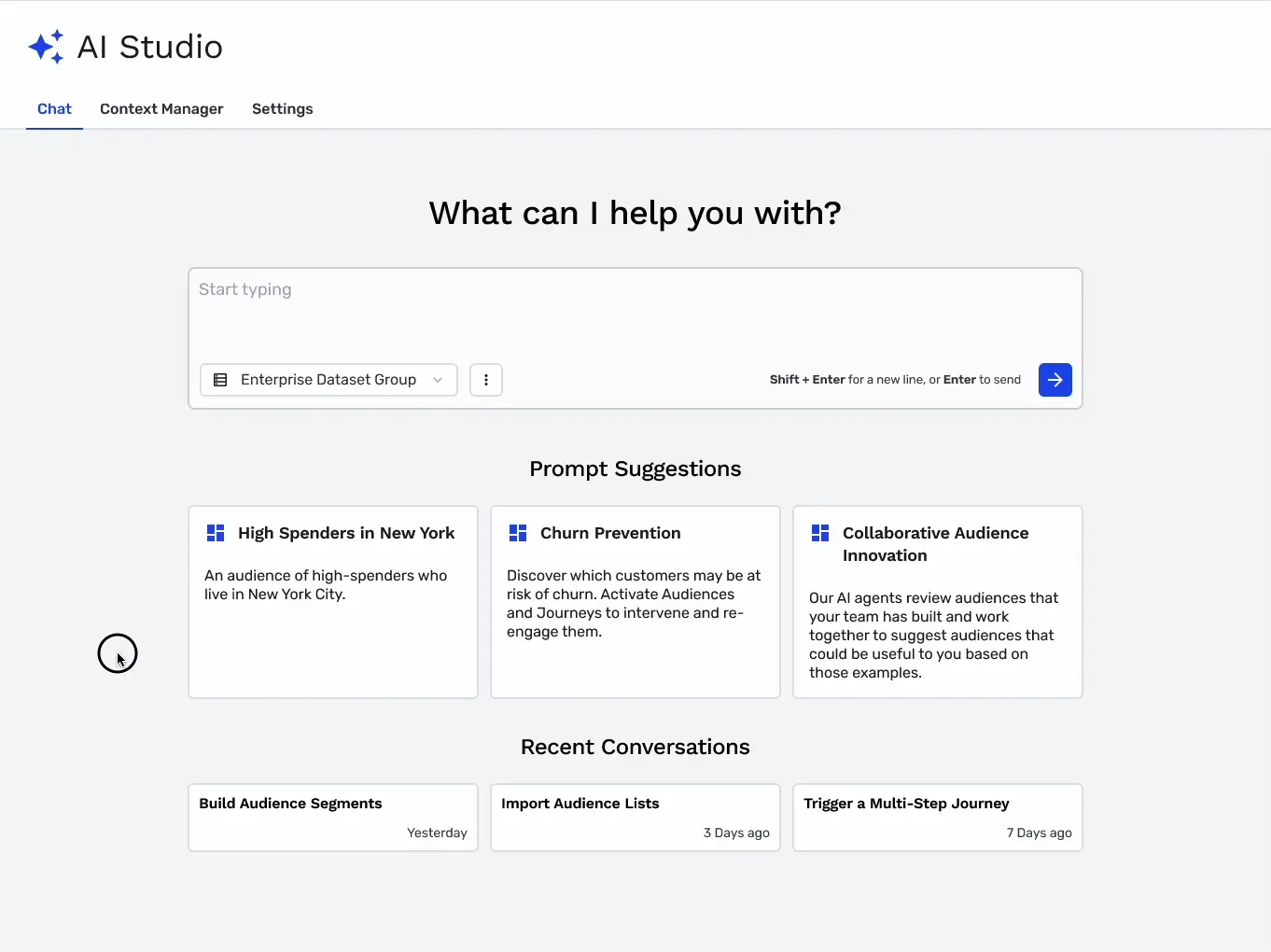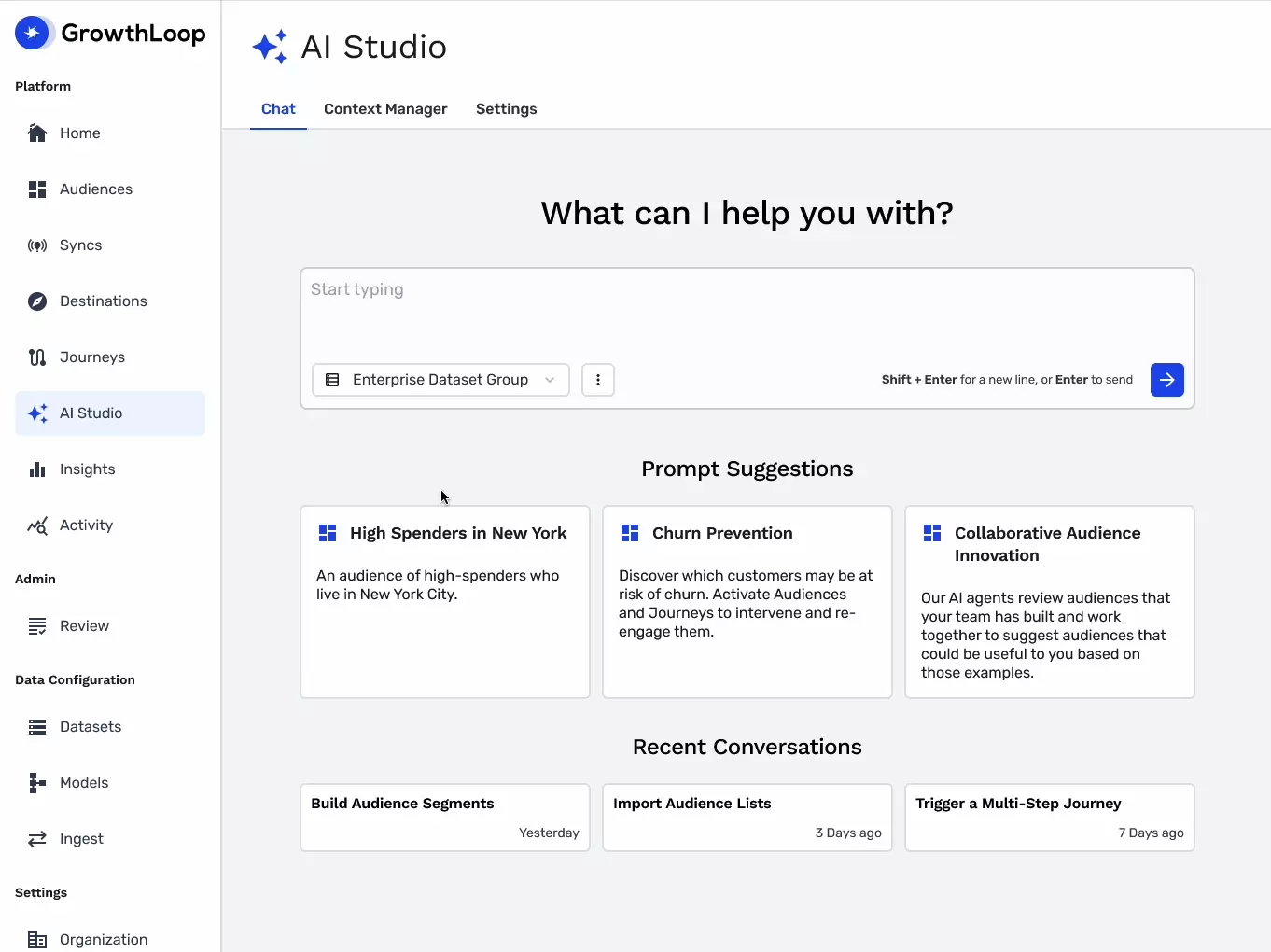Compound marketing reflects a new scale of marketing iteration and success. Marketing results should act like compound interest; results come quickly and build on previous investments.
Compound marketing takes what teams typically achieve in a month or quarter and achieves it in a week or less. Instead of accomplishing 1% growth a month (roughly 12% a year), agentic AI optimizes the marketing cycle to reach 2% growth a week or more — exceeding 180% annual growth.
A Compound Marketing Engine drives this growth by connecting all organizational data and systems to automate and rapidly optimize marketing processes.
The engine leverages first-party data in the enterprise cloud and designs campaigns that address the common marketing questions:
Who do we want to target?
What do we want to say to them?
Where do we want to reach them?
How did our campaign perform?
What did we learn to do better next time?
Marketers typically address these areas with slow, manual processes. They collect data and fine-tune their audience personas. They A/B test messages on individual channels and learn what resonates best for specific buyers at individual points of the journey. And they continually test new channel combinations to reach buyers in the best places.
All this takes an incredible amount of time. Because of that, campaigns often run for an entire quarter, and teams measure quarterly performance.
A Compound Marketing Engine applies agentic AI powered by first-party data to suggest and activate successful campaigns.
How does a Compound Marketing Engine work?
At its core, a Compound Marketing Engine:
Operates on an organization’s data cloud, which drives faster implementation, better security, decreased cost, no vendor lock-in, and – most importantly – increased effectiveness.
As the engine learns from the organization’s data, it: Proposes audiences, customer journeys, and channels for campaigns.Executes those campaigns under the marketing team’s direction to any channel.Learns from the performance data to continuously improve its results.
Proposes audiences, customer journeys, and channels for campaigns.
Executes those campaigns under the marketing team’s direction to any channel.
Learns from the performance data to continuously improve its results.
Employs agentic AI, which reasons and acts on a marketer’s behalf.
GrowthLoop’s Compound Marketing Engine significantly accelerates what marketers can accomplish by driving toward multiple marketing goals simultaneously and activating campaigns across every existing marketing investment.
The technology extends beyond the capabilities of a traditional or composable customer data platform (CDP) by introducing highly intelligent AI agents that deliver accurate outputs with minimal team input. Compound Marketing Engines remove many manual processes associated with CDPs with highly intuitive, chat-based agentic AI.
How does a Compound Marketing Engine fit in the martech stack?
Marketing technologies have evolved significantly over the past decade. Many formerly “best in class” solutions are no longer the best choice for enabling an AI-driven, omnichannel marketing ecosystem.
Data silos have plagued teams for years as they adopted channel-specific tools. Silos create a disjointed customer view and restrict valuable insights to individual teams, meaning no team is working with complete customer insights or understands the entire customer journey.
As organizations have optimized their martech stacks, integration with their existing martech ecosystem is their top priority to help eliminate silos. Compound Marketing Engines ensure this connectivity by connecting all tools to the data cloud.
Data clouds — Snowflake Data Cloud, Google Cloud BigQuery, Databricks, etc. — are the best data storage solutions because they can connect to all channel tools and are highly secure. Data clouds are the hub for all customer data and the best location to apply AI orchestrated by the Compound Marketing Engine.
Compound Marketing Engines evolved from composable CDPs and further reinforce how traditional CDPs, marketing clouds, and marketing automation platforms no longer provide the ideal connectivity and experience to deliver personalized customer journeys effectively.




